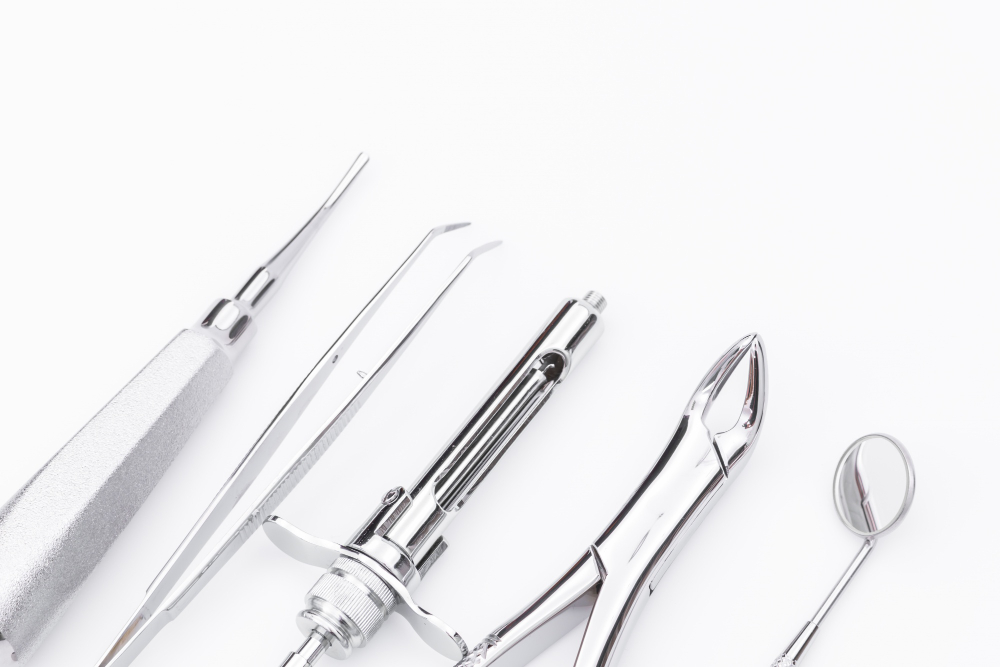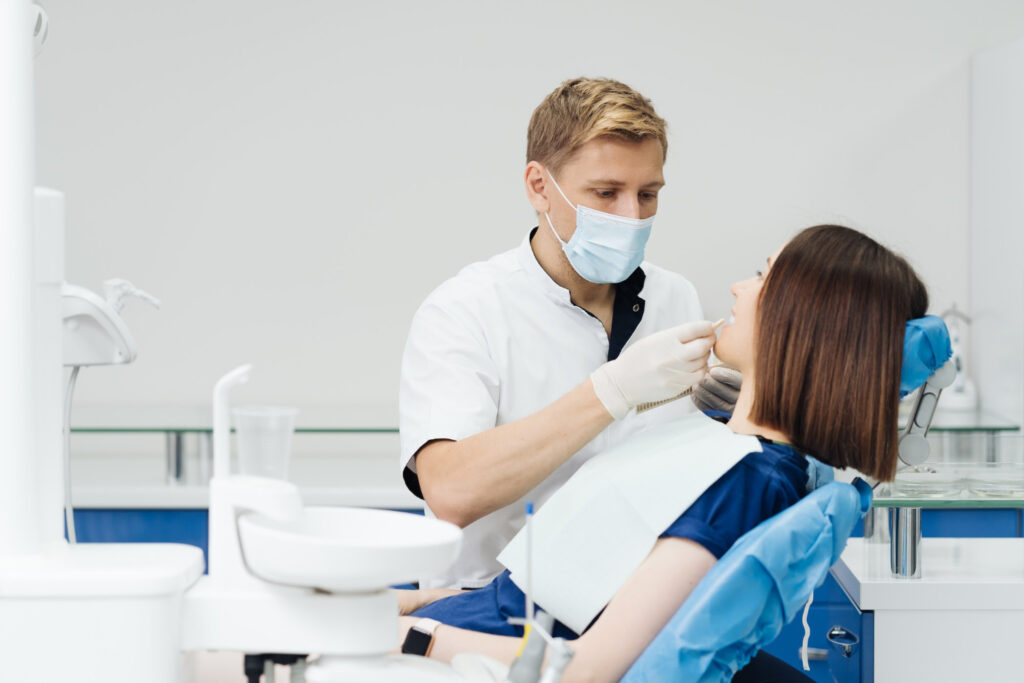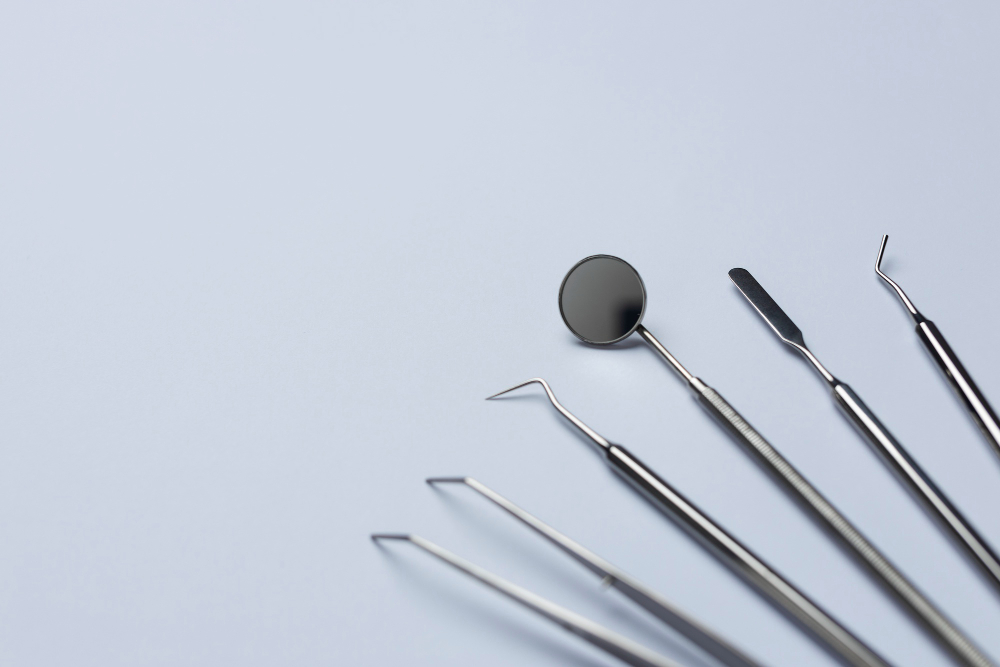In current dentistry, diagnostic instruments form the backbone of any successful treatment plan. Basic dental surgical instruments help clinicians treat oral conditions, recognized with the help of diagnostic instruments, allowing for the diagnosis of early signs of cavity formation, gum disease, and structural defects. Although visual inspection is the beginning, dental diagnostic instruments provide dentists with tactile feedback and visibility to accurately diagnose. As a general practitioner or specialist, having the right instruments at your clinic ensures better patient outcomes and smoother workflows.
In this blog, we will discuss the most common dental instruments, focusing on their purposes, key functions, and important features. If you are beginning a practice or just want to be informed about the tools, this detailed discussion is for you.
1. Dental Mirrors
Dental mirrors are simple-looking and some of the most commonly used dental instruments but actually, they are the most essential instruments in any dental exam. Any clinical examination starts with a mirror handy, so dentists and hygienists can see unseen surfaces that are not directly observable. Mirrors also assist in reflecting light into dark areas of the mouth to enhance visibility when inspecting. Without a mirror, even the best practitioner would be practicing in the dark, literally and metaphorically.
Usage:
- To reflect light onto intraoral surfaces
- To provide indirect vision
- To retract lips, cheeks, and tongue
Functions:
- Enhances visual access during examination
- Helps identify calculus, plaque, and caries
- Aids in patient comfort and better maneuvering
Key Features:
- Double-sided or front surface mirrors
- Anti-fog coating
- Stainless steel or resin handles for grip
- Available in varying diameters
2. Explorers
If there’s one instrument that helps clinicians “feel” what can’t be seen, it’s the dental explorer. These sharp-pointed common dental instruments are used during the initial exam to detect irregularities in the tooth surface. Dentists use it to locate tiny pits, caries, and margins around existing fillings. Its responsiveness provides a real-time, tactile readout that complements what is seen in X-rays or visual inspections.
Usage:
- Detecting caries (cavities)
- Checking margins of restorations
- Identifying calculus and enamel defects
Functions:
- Provides tactile feedback through vibration
- Helps evaluate the health of the tooth structure
- Enables detection of subsurface lesions
Key Features:
- Sharp, flexible tips
- Lightweight ergonomic design
- Rust-resistant material
- Available in single or double-ended variants
3. Periodontal Probes
Periodontal probes are one of the most basic dental instruments and are also critical for assessing a patient’s gum health. They are thin, graduated instruments used to measure the depths of pockets around teeth, an essential method of detecting and following periodontal disease. Often overlooked, the periodontal probe is vital for treatment planning and evaluating periodontal therapy outcomes. Even a difference of one or two millimeters can distinguish healthy gums from advanced periodontal disease.
Usage:
- To assess gingival pocket depth
- To detect periodontal attachment loss
- To monitor disease progression
Functions:
- Measures inflammation-related pocketing
- Helps identify periodontal disease stages
- Provides data for diagnosis and treatment planning
Key Features:
- Millimeter markings
- Color-coded tips for quick reference
- Rounded, blunt ends for gentle probing
4. Dressing Pliers
Dressing pliers fall into the list of basic dental instruments, and are behind-the-scenes champions of any dental practice. They are tweezer-type instruments designed to carry little things such as cotton rolls, wedges, and dressing material without violating the asepsis of the sterile field. Though they don’t do diagnostic tests, they make several procedures more convenient and hygienic. Clinicians can function facilely through their versatility and precision, particularly in constricted or difficult-to-access areas.
Usage:
- Placing cotton rolls, wedges, and dressing materials
- Retrieving foreign objects
- Assisting in band placement during restorations
Functions:
- Offers controlled placement and retrieval
- Minimizes contamination
- Enhances procedural efficiency
Key Features:
- Serrated beaks for a secure grip
- Angled or straight tips
- Locking mechanism for better control
- Non-slip handles
5. Dental Scalers
Scalers are vital dental hygiene instruments in regular cleanings as well as periodontal treatment. They eliminate plaque and hardened tartar (calculus) accumulating above the gum line. The sharp, thin tips enable hygienists to access tight spaces between teeth, while the robust handles offer good leverage for effective scaling. By eliminating deposits that regular brushing cannot access, dental scalers prevent gum disease and ensure oral hygiene in the long term.
Usage:
- Supragingival scaling
- Cleaning interproximal areas
- Removing hardened tartar
Functions:
- Helps prevent periodontal diseases by removing irritants
- Enhances patient oral hygiene when used during cleanings
- Improves aesthetics by removing stains
Key Features:
- Thin, pointed tips for precision
- Strong shanks for pressure resistance
- Ergonomic handles for reduced hand fatigue
- Made from surgical-grade stainless steel
6. Dental Curettes
Dental curettes are basic dental surgical instruments and vital for periodontal treatment. In contrast to scalers used for supragingival debridement, curettes are meant to excise subgingival deposits and improve root surface smoothness. Curved at the tips, they enable thorough cleaning without inducing trauma to soft tissue. Whether you’re doing non-surgical scaling or ongoing periodontal treatment, curettes provide the gentle action required to clean beneath the gum line and foster healing.
Usage:
- Subgingival scaling and root planing
- Debridement of periodontal pockets
- Removal of soft tissue lining
Functions:
- Cleans deep pockets without damaging tissue
- Promotes healing by removing bacterial biofilm
- Supports non-surgical periodontal therapy
Key Features:
- Rounded tips to prevent tissue trauma
- Gracey and Universal varieties are available
- Offset blades for better access
- Color-coded handles for easy identification
7. Cotton Pliers
In most dental treatments, keeping the working field clean and dry is essential; cotton pliers are used for that purpose. They act as an extension of the clinician’s hand, allowing precise placement of sterilized cotton pellets, gauze, and small items. Their fine tips provide precision, and their firm grip keeps the item from slipping while placing or removing it. Whether placing medication or adjusting a dam, cotton pliers make the process more efficient and controlled.
Usage:
- Inserting and removing cotton pellets
- Transferring medications or dressings
- Maintaining sterility during procedures
Functions:
- Reduces the risk of contamination
- Assists in quick retrieval and placement
- Essential for hygienic practice
Key Features:
- Spring-loaded action
- Available in curved and straight forms
- Serrated jaws for improved grip
- Available with spring-action mechanisms for ease of use
8. Anglevator
The Anglevator is a common dental extraction instrument that blends the functions of elevators, luxating, and periotomes into one efficient instrument. It is designed to streamline the extraction process by enabling clinicians to cut, loosen, and elevate teeth without switching tools. Its angled working end allows precise entry into the periodontal ligament space, offering both control and visibility in tight areas. With a firm yet ergonomic handle, the Anglevator provides excellent tactile feedback, reducing hand fatigue during extended procedures. This all-in-one tool is especially beneficial in surgical settings where speed and precision are crucial.
Usage:
- Used to sever the periodontal ligament before tooth extraction
- Helps loosen and lift roots or teeth
- Supports minimally invasive tooth removal
Functions:
- Replaces multiple instruments like elevators and luxatings
- Reduces trauma to surrounding tissues
- Improves the efficiency and speed of dental extractions
Key Features:
- Sharp, angled blade for clean ligament separation
- Comfortable, slip-resistant grip for enhanced control
- Made from high-quality surgical-grade stainless steel
- Helps minimize procedural steps in complex extractions
9. Mouth Gags and Cheek Retractors
Proper visibility and access are essential for accurate dental work, and that’s precisely what mouth gags and cheek retractors provide. These tools gently hold back the cheeks, lips, or tongue, creating a clear and dry field. This is especially useful during photography, orthodontic procedures, or surgeries involving the posterior teeth. They’re designed to be comfortable for patients while providing the clinician with a stable, unobstructed view.
Usage:
- Holding the cheeks or tongue away from the working area
- Keeping jaws open for better access
- Facilitating intraoral photography
Functions:
- Enhances visualization of posterior teeth
- Allows for uninterrupted procedures
- Reduces hand strain from manual retraction
Key Features:
- Made from autoclavable German stainless steel
- Adjustable designs for comfort
- Non-slip grip
- Lightweight for patient comfort
Why are High-quality Dental Instruments Necessary?
Better-quality instruments improve the accuracy of diagnosis and ensure safer and more comfortable experiences for patients and clinicians alike. Faultily constructed devices tend to degrade, are uncomfortable to use, or provoke diagnostic errors. That’s why investing in good dental diagnostic instruments is a wise decision and a requirement for any successful, modern dental practice concerned with quality and durability in the long run.
Where to Find Top-quality Basic Dental Surgical Instruments?
If you want instruments that provide consistent performance, durability, and ergonomic design, GerDentUSA is your one-stop shop. As the parent company of this website, GerDentUSA has a reputation for producing precision-engineered dental instruments designed to meet the requirements of modern-day clinicians. Their product line ranges from basic dental surgical instruments to sophisticated ones, all produced with surgical-grade materials and rigorous quality control.
Frequently Asked Questions (FAQs)
Q1: What’s the difference between dental scalers and curettes?
A: Scalers are designed for cleaning above the gum line, while curettes are ideal for cleaning below it. Curettes have rounded tips for safer subgingival scaling.
Q2: How do I choose the right periodontal probe for my practice?
A: Choose based on the measurement scale and tip design that fits your treatment style. UNC-15, Williams, and WHO probes are among the most common.
Q3: Are dental mirrors available in different types?
A: Yes, you can choose between front surface mirrors (which reduce distortion) and standard mirrors. Sizes and handle types vary based on your preference.



